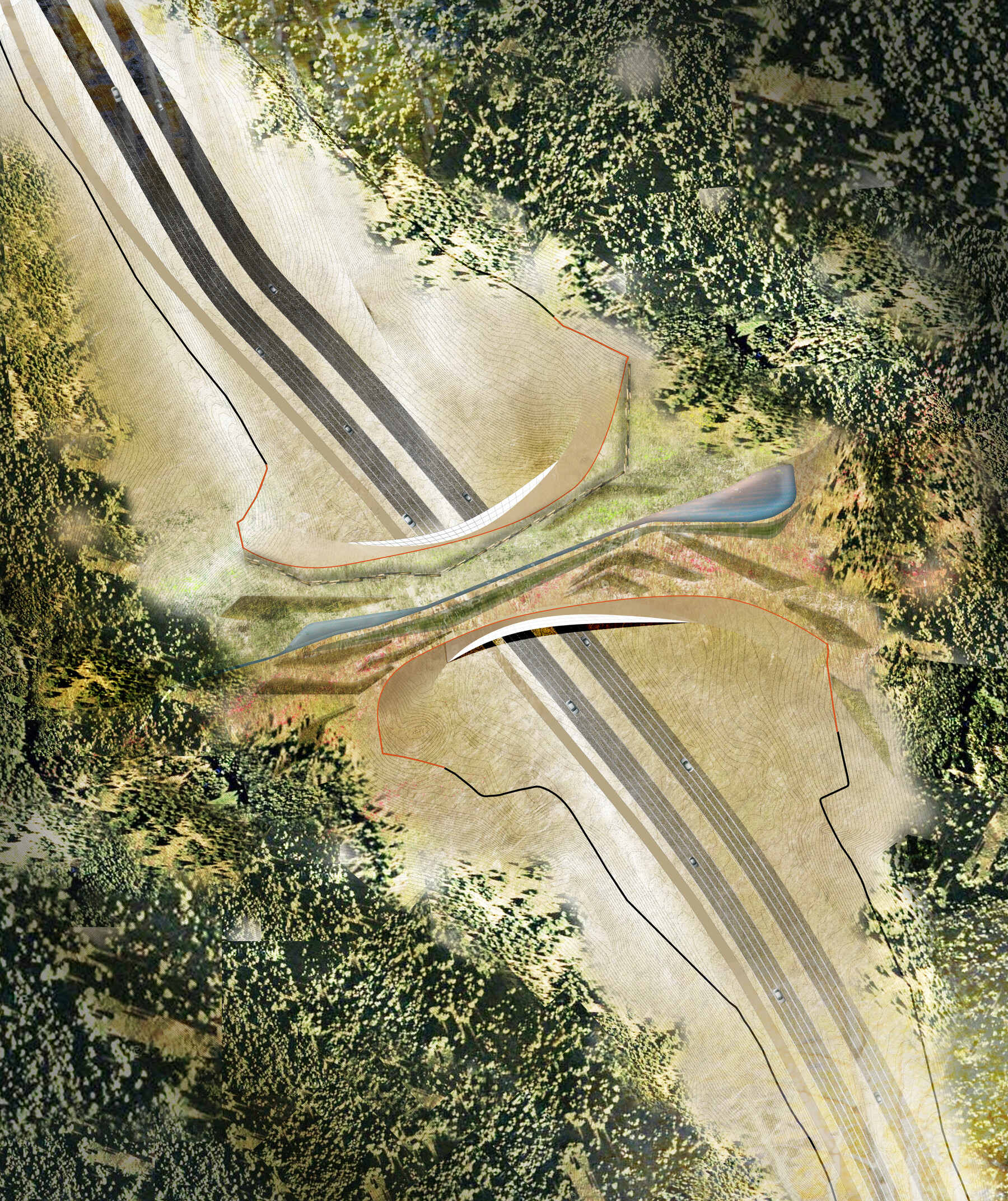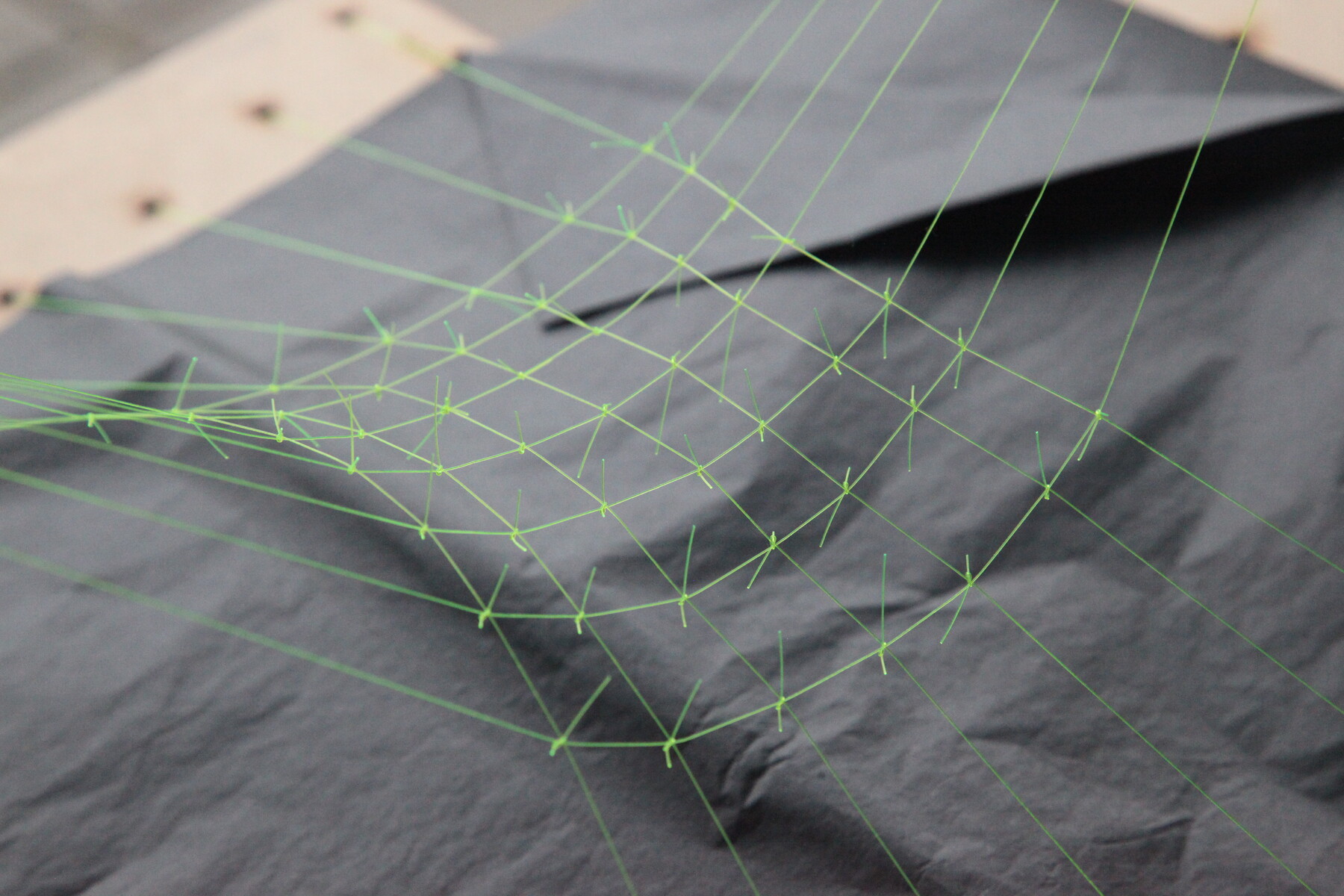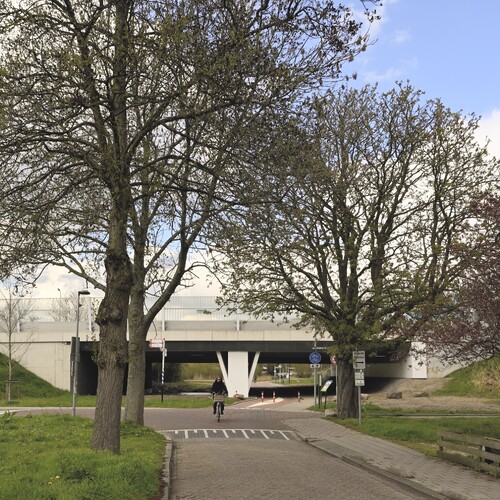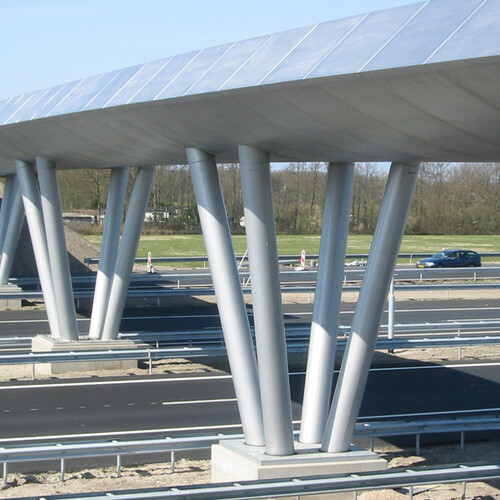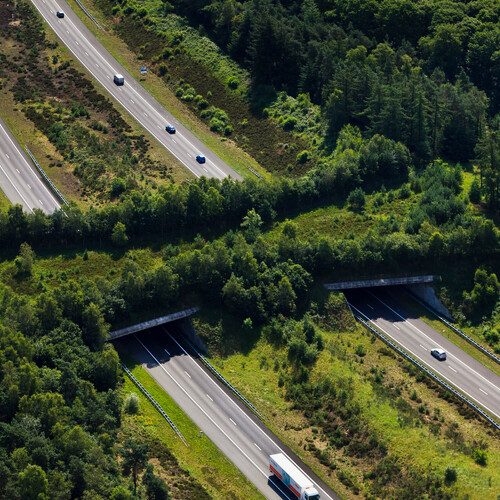The look of the landshape-design can best be described as a double curved arch, with the two curves at a straight angle, much like in the case of a Pringle potato crisp. Why is this such an ideal shape? First of all it allows for a free span that mimics the gradient of the surrounding slopes in the landscape, while secondly producing a kind of bowl on top with curled up sides, giving the wildlife a sense of safety, because they shield off the visual and acoustic presence of the highway. This shape is both beautiful and functional and fits very well into the landscape, but it also produced quite a few technical challenges.
How does one find out how to accurately describe such a thin concrete shell for this specific asymmetrical location? And how does one produce the formwork to pour the concrete in this unique shape? The Vail wildlife crossing was designed using a parametric model, which is a description of the shape and structural qualities of the material in mathematic functions. Together they form a logical and coherent model. Changes in the parameters produce different shapes, new problems and new possibilities. This way the designer can ask questions and receive feedback from the parametric model, that, much like a script, dishes out a series of consequences as a result of assumed values.
Designing and form-finding merge in the application of this method. This is the way the resulting shape for this particular location was found. A parametric model makes it easy to produce adapted versions of the basic design for other locations.
The Colorado competition referred to a system of wildlife crossings. The ZJA design is particularly well suited to adapt itself to the morphology of other locations, without losing its characteristic look. The formwork, consisting of the textile membrane and the network of steel cables can be used to construct the other versions, as it is flexible. This reduces waste and the amount of energy used.

